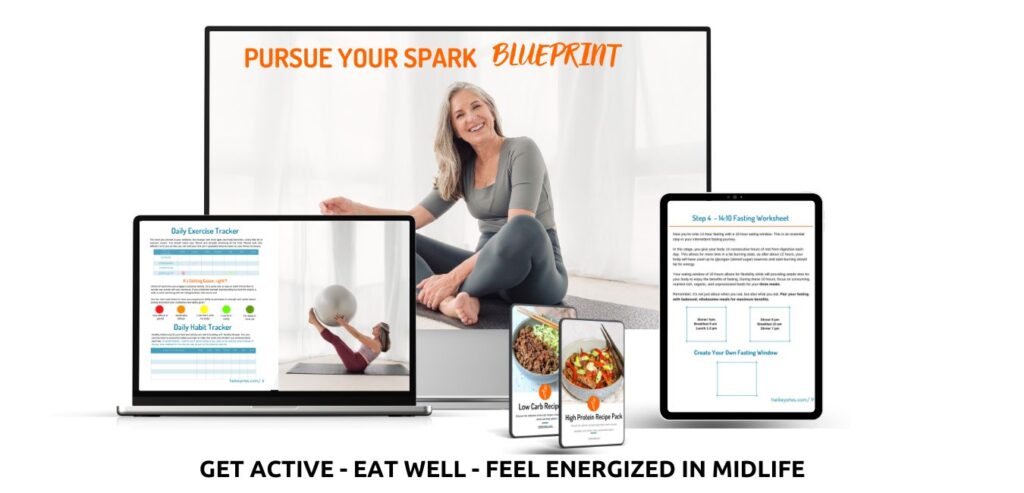Heart disease is the number one killer of women. In fact, after age 50, nearly half of all deaths in women are due to some form of cardiovascular disease. Once women reach the age of 50, about the age of natural menopause, their risk for heart disease increases dramatically. This is why taking care of your heart health needs to start today.
What is Heart Health Month?
February is National Heart Health Month, when the US spotlights heart disease, the #1 killer of Americans. President Lyndon B. Johnson issued the first proclamation in 1964, and he was among millions of people in the country who had heart attacks.

What types of heart disease are there?
The term “heart disease” refers to several types of heart conditions. The most common type of heart disease for people over 50 is coronary artery disease (CAD), which occurs when the arteries that supply blood to the heart become narrowed or blocked by plaque. This can lead to chest pain, shortness of breath, and even heart attack.
Another type of heart disease is cardiac arrest, which occurs when the heart is unable to pump enough blood to meet the body’s needs, and people stop breathing normally. This can cause fatigue, shortness of breath, and swelling in the legs.
Many cardiac arrests in adults happen because of a heart attack. This is because a person who is having a heart attack may develop a dangerous heart rhythm, which can cause cardiac arrest.

Heart Disease Risks For Women Over 50
Women over 50 are at a slightly higher risk of dying from a heart attack than men of the same age, and there are several reasons for this.
One reason is that heart disease tends to develop later in life after menopause in women. Additionally, women’s symptoms of heart disease may be more subtle than men’s, making it harder to diagnose and treat.
It is essential for women over 50 and 60 to be aware of their risk of heart disease and to ensure they receive regular screenings and treatment to reduce their risk of a heart attack.
You may be at a higher risk of developing heart disease if you have a family history. Pregnancy, birth control, and hormonal changes in the years surrounding menopause can also increase a woman’s risk.
For women, menopause doesn’t cause cardiovascular disease, but risk factors can occur around this period of a woman’s life, and heart disease symptoms may become more evident afterward.
Common Risk Factors:
- Being overweight and/or obese (For people who are carrying a lot of body fat (including a big belly, which is a risk factor for heart disease)
- Eating an unhealthy diet
- Not exercising enough
- Drinking too much alcohol
- Diabetes
- Smoking
- High cholesterol
Many of these symptoms can be treated with a healthy lifestyle or lifestyle changes that include aerobic exercises, managing your body weight, and a well-balanced diet. More on this later.

Menopause and heart disease
Menopause plays an important role in heart health for women over 50. As women enter menopause, their levels of estrogen decrease, which can increase their risk of heart disease.
Estrogen protects the heart, so lower hormone levels can lead to increased risk factors such as high blood pressure, high cholesterol, and obesity. Additionally, menopause can lead to increased inflammation in the body, which is also a risk factor for heart disease.
Furthermore, the hormonal changes during menopause can make it more difficult for women to control diabetes, increasing their risk of heart disease.
It’s crucial for women who are nearing or going through menopause to pay special attention to their heart health by managing other risk factors such as high blood pressure, high cholesterol, diabetes, and obesity.
Check out: 5 Ways To Boost Your Metabolism
Women’s Heart Health Facts Every Woman Should Know

5 Ways Women Over 50 Can Improve Their Heart Health
Research has shown that exercising regularly in middle age can improve the elasticity of blood vessels brought on by a sedentary lifestyle and reduce cardiovascular disease risk.
1. Be active!
Being active is a significant step towards good heart health and preventing heart health in women over 50. Aerobic exercises, such as brisk walking, jogging, cycling, swimming, and dancing, improve cardiovascular fitness, increase heart and lung efficiency, and reduce the risk of heart disease.
Aerobic exercises help to increase blood flow to the heart, which can help lower blood pressure, improve cholesterol levels, and decrease the risk of heart attack and stroke.

HIIT vs. strength training
High-intensity interval training (HIIT) is a great way to prevent heart disease from occurring. One Canadian Journal of Cardiology study found that 15-second exercise intervals at peak power and passive recovery of the same duration most effectively prevented cardiovascular disease. This form of exercise may be challenging for women over 50 as many deal with knee, ankle, or hip pain related to aging.
Resistance training has a more specific effect on body composition. For people carrying a lot of body fat (including a big belly, which is a risk factor for heart disease), it can help reduce fat and create leaner muscle mass.
Research shows that a combination of aerobic exercise and resistance work may help raise HDL (good) cholesterol and lower LDL (bad) cholesterol.
Note: Don’t ditch strength training for aerobic exercise only. Including resistance training, at least two non-consecutive days per week, is a good rule of thumb, according to the American College of Sports Medicine.

Running vs. walking
Research reported by the American Heart Association finds that walking is just as good as running when it comes to lowering your risk for heart disease.
Walking can improve your cholesterol, blood pressure, and energy levels and also fight weight gain to improve heart health overall.
This is good news for women over 50 who can no longer run or want to be kinder to their joints.
Biking, dancing, and swimming
Bottom line: aerobic exercise increases the heart rate, strengthens your heart muscle, helps to manage weight, and lowers blood pressure. Walking, swimming, dancing, and riding a bike are all excellent ways to achieve these goals.
Pilates
Pilates is a form of exercise that focuses on building strength, flexibility, balance, and control in the core muscles of the entire body. It is a low-impact form of exercise and is gentle on the joints. There is some evidence to suggest that regular Pilates practice may have a beneficial effect on heart health.
I would not recommend Pilates as a weight loss or heart health program. The benefits gained through the Pilates practice result in a stronger core, balanced use of the entire body, better balance and posture, improved breathing, and the low-impact nature of Pilates is ideal for women over 50 and their general health.
Check out: The Best Exercises For Women Over 50

How long should you exercise?
In order to promote heart health, do at least 150 minutes of moderate-intensity aerobic activity or 75 minutes of vigorous-intensity aerobic activity a week. Preferably a combination of both spreads throughout the week.
Combine this with moderate or high-intensity muscle-strengthening activity (such as resistance or weights) at least 2 days a week. You’ll notice how much stronger and healthier you’ll feel.
2. Eat a heart-healthy diet
A heart-healthy diet is an essential aspect of protecting against a heart attack. A diet rich in fruits, vegetables, whole grains, lean proteins, and healthy fats can help lower the risk of heart disease. Some specific foods that are particularly beneficial for heart health include:
- Fruits and vegetables are rich in antioxidants, vitamins, and minerals that can help to lower blood pressure and improve cholesterol levels.
- Whole grains are high in fiber and can help to lower cholesterol and improve heart health.
- Lean proteins like fish, poultry, and plant-based sources such as beans, lentils, and tofu. They are also rich in omega-3 fatty acids, which can help to reduce inflammation in the body.
- Healthy fats include monounsaturated and polyunsaturated fats, which can help lower cholesterol and reduce the risk of heart disease. Good sources of healthy fats include avocados, nuts, seeds, and olive oil.
Limit the intake of processed foods, sugary drinks, and saturated and trans fats, which can increase the risk of heart disease.
If you’re looking for simple, healthy recipe ideas and meal plans and to track your meals check out my new recipe packs for any lifestyle here.
Reduce your alcohol consumption and drink in moderation. Moderate drinking is defined as an average of one drink per day for women and one or two for men. One drink might be less than you think: 12 ounces of beer, 4 ounces of wine, or 1.5 ounces of 80-proof spirits.

Intermittent fasting and heart disease?
Intermittent fasting reduces inflammation and encourages autophagy. Autophagy is a natural part of your immune system process. It’s the body’s way of cleaning out damaged cells to regenerate newer, healthier cells. Old, damaged, and abnormally developing cells are recycled and used for energy to create new healthy cells.
A new study also concluded that intermittent fasting reduces inflammation. Inflammation can lead to various diseases, such as diabetes, multiple sclerosis, and inflammatory bowel disease. This is particularly important in midlife as many of these conditions begin to creep upon us. Intermittent fasting in midlife is an effective way to minimize the risk of these illnesses.
Intermittent Fasting may not be directly related to heart disease, but it might be something to consider when reducing inflammation.
Check out my post on: 5 Amazing Ways Intermittent Fasting Helps You In Midlife.
Did you know that Pilates and Intermittent fasting combined are the most effective ways to lose body fat and supercharge your energy?
Check out the Pursue Your Spark Blueprint. We combine Pilates and strength exercises with Intermittent Fasting to help empty-nester moms over 50 lose weight, get lean, and boost their metabolism.

3. Keep a healthy weight
You might wonder, “How much should I weigh”? Everyone has no ideal weight because we are all so different. The answer simply might be: “It depends on how you feel.”
Biological factors such as age, height, and gender factors can be just as important as a number you can find on a chart.
BMI (body mass index) is one chart you might find helpful. Here is a link to a calculator that helps you determine your BMI. The results are based on height and weight and don’t consider the other considerations mentioned above.
I find measuring body fat percentage more useful. It is the weight of a person’s fat divided by their total weight. This measurement includes both a person’s essential and stored fat.
The acceptable body fat range is 20-30%, and the obese range is 32% or more for women.

Diabetes and Heart Health
Having diabetes means that the body cannot properly process glucose (sugar) in the blood, which can lead to high blood sugar levels. This can damage the blood vessels and nerves that control the heart, increasing the risk of heart disease.
People with diabetes are also more likely to have other risk factors for heart disease, such as high blood pressure, high cholesterol, and obesity. Additionally, diabetes can increase the risk of heart attack and stroke.
4. Reduce Stress
Stress increases cortisol levels, which can lead to unwanted weight gain, contributing to belly fat and the risk of heart disease.
3 simple steps to manage your stress are:
- Remove yourself from a stressful situation and don’t engage.
- Go for a walk and breathe to relax
- Say No by setting boundaries with the people around you.

5. Practice better sleep hygiene
Research has shown that sleep is an essential component of cardiovascular health. Destressing before bed by taking a hot bath, journaling, and keeping your room dark and cool are some strategies that you can implement to get a good night’s sleep.
5 ways to improve heart health for women over 50, 60, and beyond
There are several steps that women over 50 can take to improve their heart health. One of the most important is maintaining a healthy lifestyle, which includes eating a balanced diet, getting regular physical activity, and maintaining a healthy weight.
Additionally, it’s essential to quit smoking, avoid excessive alcohol consumption, and manage stress through relaxation techniques like deep breathing, meditation, Pilates, or yoga.
Regular check-ups with your healthcare provider are another critical step, as they can monitor your heart health and check for any signs of heart disease. Check out the American Heart Health Month Toolkits for additional information.